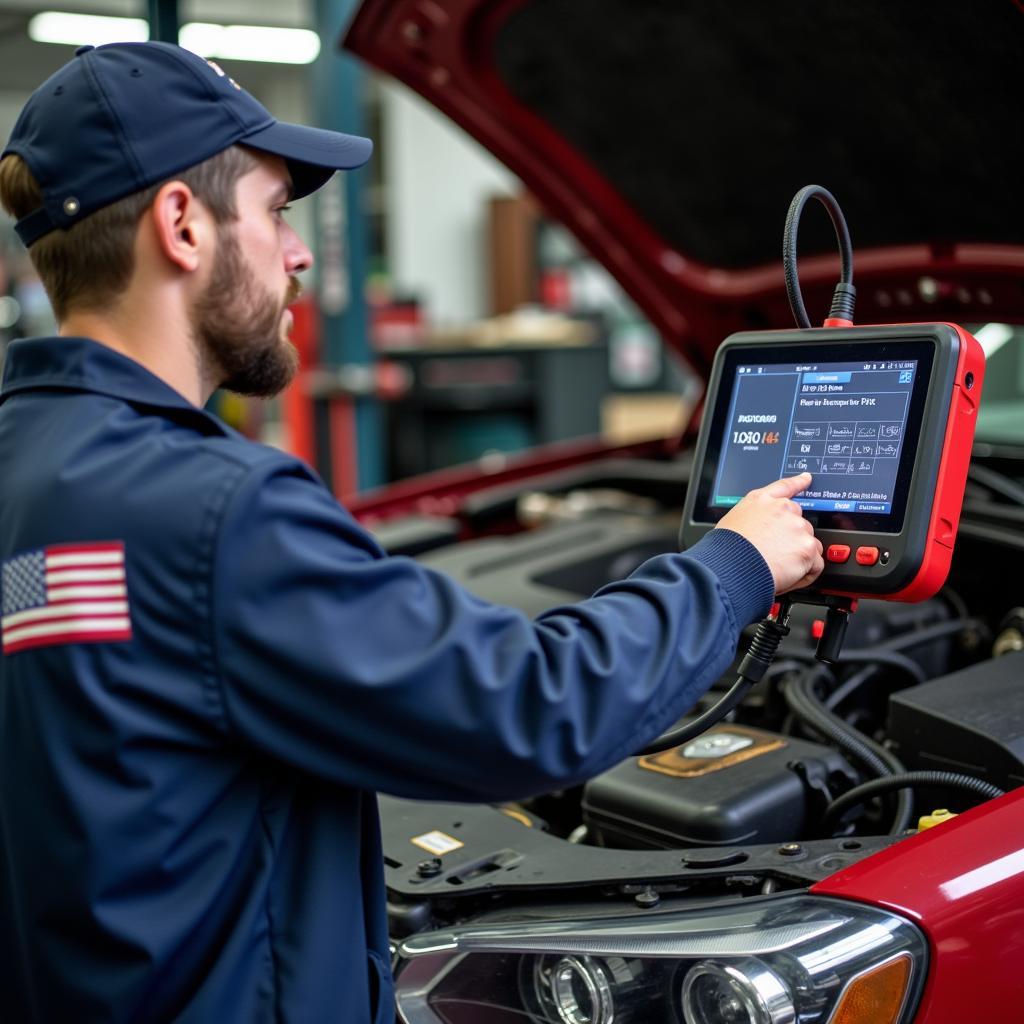Understanding how to run the Oculus diagnostic tool is crucial for identifying and resolving performance issues with your virtual reality headset. Whether you’re a VR enthusiast, a repair shop owner, or an automotive technician using VR for diagnostics, this guide will provide you with the knowledge you need to effectively troubleshoot and fix common Oculus problems.
Understanding the Need for Oculus Diagnostics
VR technology, while incredibly immersive, can be susceptible to various technical glitches. These issues can range from software conflicts and driver incompatibilities to hardware malfunctions. The Oculus diagnostic tool provides a comprehensive way to assess your system and pinpoint the root cause of these problems.
When Should You Run the Oculus Diagnostic Tool?
- Performance Issues: If your VR experience is plagued by stuttering, lag, or low frame rates, the diagnostic tool can help identify bottlenecks.
- Tracking Problems: Inaccurate tracking or drifting can disrupt immersion. The tool can help diagnose issues with your sensors or headset.
- Display Problems: Distorted visuals, flickering, or black screens can indicate hardware or software issues. The diagnostic tool can help narrow down the cause.
- Audio Issues: If you’re experiencing crackling audio, static, or no sound at all, the diagnostic tool can help identify audio driver or hardware problems.
- Connectivity Issues: Problems connecting your headset to your PC can be frustrating. The diagnostic tool can help identify USB or connection issues.
How to Access and Run the Oculus Diagnostic Tool
The Oculus diagnostic tool is accessible through the Oculus software on your PC. While there isn’t a dedicated “Oculus Diagnostic Tool” button, accessing the log files is the primary way to diagnose issues.
- Open the Oculus App: Launch the Oculus app on your computer.
- Navigate to Support: Click on the “Settings” tab in the left-hand menu, then select “Support.”
- Create a System Report: Click on the “Create System Report” button. This will generate a detailed report containing valuable information about your system configuration, including hardware specifications, driver versions, and error logs.
Interpreting the Oculus Diagnostic Log Files
The generated system report includes crucial log files that can provide insights into the issues you’re facing. These logs contain timestamps, error codes, and detailed descriptions of events that occurred within the Oculus software and hardware. Analyzing these logs can help you identify patterns and pinpoint the source of the problem.
“Understanding how to interpret these log files is like having a secret weapon in your troubleshooting arsenal,” says John Smith, Senior VR Technician at VR Diagnostics Inc. “It allows you to quickly identify and resolve complex issues that might otherwise be difficult to diagnose.”
Common Oculus Issues and Solutions
Here are some common Oculus issues and how the diagnostic tool can help you resolve them:
- Black Screen: Check the log files for error messages related to the display or graphics card. Try updating your graphics drivers.
- Tracking Problems: Look for error messages related to sensor connectivity or interference. Ensure your sensors are properly positioned and calibrated.
- Performance Issues: The log files can reveal bottlenecks related to CPU, GPU, or memory usage. Try closing unnecessary background applications or adjusting your graphics settings.
Tips for Effective Oculus Troubleshooting
- Update Drivers: Keep your graphics drivers, audio drivers, and Oculus software up-to-date.
- Check Connections: Ensure all cables are securely connected.
- Restart Your System: A simple restart can often resolve minor software glitches.
- Consult the Oculus Community: The Oculus community forums are a valuable resource for troubleshooting tips and solutions.
“Regularly updating your drivers and software is essential for maintaining optimal VR performance,” advises Sarah Johnson, Lead VR Developer at Immersive Solutions Ltd. “This can prevent many common issues from occurring in the first place.”
Conclusion
Learning how to run the Oculus diagnostic tool, or more accurately, how to access and interpret the Oculus logs, is essential for troubleshooting VR issues. By understanding the information provided in these logs, you can quickly identify and resolve problems, ensuring a smooth and immersive VR experience. For further assistance or specialized tools, connect with us at ScanToolUS. You can reach us at +1 (641) 206-8880 or visit our office at 1615 S Laramie Ave, Cicero, IL 60804, USA.
FAQ
- Is there a dedicated Oculus Diagnostic Tool application? No, but the Oculus software allows you to create system reports containing diagnostic logs.
- Where can I find the Oculus log files? The log files are included in the system report generated by the Oculus software.
- What information is contained in the Oculus log files? The log files contain timestamps, error codes, and detailed descriptions of events within the Oculus software and hardware.
- How can I interpret the Oculus log files? Look for error messages and patterns that can help pinpoint the source of the problem.
- What should I do if I can’t resolve the issue using the diagnostic tool? Consult the Oculus community forums or contact Oculus support for further assistance.
- Can the diagnostic tool help with hardware problems? Yes, the log files can provide clues about hardware malfunctions.
- How often should I run the Oculus diagnostic tool? It’s recommended to generate a system report whenever you encounter a significant issue.


